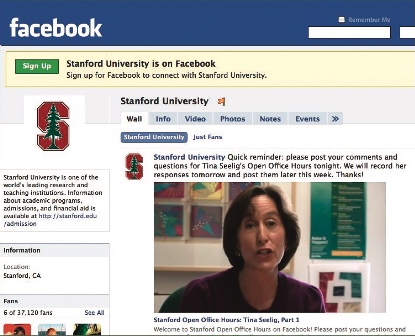BY MADHURI SHEKAR
Are you on facebook? do you tweetabout your day? Do you ‘Digg’ the latest viral YouTube sensation? If you don’t, you’re missing out on the latest, most significant trend on the Internet–social media.
Social media employs a gamut of different technologies and services, providing the ability to share content instantly with friends and the general web audience. Where traditional media was based around the one-way transmission of information and entertainment, social media is geared around two-way dialogue, collaboration, user-generated content and immediate communication.
Social media is a powerful force for breaking down barriers between people across the world, connecting different cultures and nations in far off places. Hindu organizations can use these new tools to promote Sanatana Dharma. Let’s see how with a look at today’s two most popular–Facebook and Twitter.
Facebook is the web’s biggest social networking sensation, with over 200 million active users. While it is primarily used for personal purposes–for networking and catching up with friends and family–Facebook also allows businesses and organizations to set up fan pages to communicate with their customers, followers and fans. Major brands, such as Starbucks, Coca Cola, Adidas and others, use Facebook to connect personally with their consumers in a variety of ways.
Religious organizations have also begun using Facebook to stay in touch with their followers. At the Kauai Hindu Monastery’s Facebook page, (www.facebook.com/KauaiHinduMonastery [www.facebook.com/KauaiHinduMonastery]) for instance, you can keep abreast of daily news, engage in discussions with fellow devotees, share your thoughts, opinions and experiences on the “Wall,” view photographs and videos of the ongoing Iraivan Temple project, and instantly share content with your entire group of friends.
You’ve heard of blogging–now there’s microblogging, with Twitter riding the crest of the wave. Twitter allows you to post your thoughts in 140 characters or less for your friends (and the world) to see. This online mass-texting service is the latest addicting social networking phenomenon.
While Twitter may seem frivolous at first glance, it can be a critical mode of communication. For example, it played a significant role recently in the chaos following the Iranian election, when the government clamped down on media and communications, and began expelling international journalists. Meanwhile, activists on the ground frantically tweeted updates about the situation, often with compelling images and videos of the citizen protests that were being violently suppressed. With traditional media sources stifled, journalists around the world began relying on citizen reports streamed through Twitter to cover the hot situation in Iran.
Aside from its value as a tool of social and political movements, Twitter is also being used by religious organizations and leaders to communicate with their followers. Devotees of Mata Amritanandamayi, “The Hugging Saint,” can follow her travels around the world through her Twitter account (@amritapuri), which provides real-time updates and descriptions of her darshans and tours.
COMMENT. LIKE. SHARE.
The real genius of social media is in its simplicity. Most social media platforms are designed for ease of use, allowing you to instantly share interesting content and connect with multiple people and personalities in a short span of time. As the Internet evolves into a shared space for collaboration, consensus and citizen activism, it is important to join the conversation and not get left behind. Follow your favorite spiritual magazine at twitter.com/HinduismToday [twitter.com/HinduismToday].
